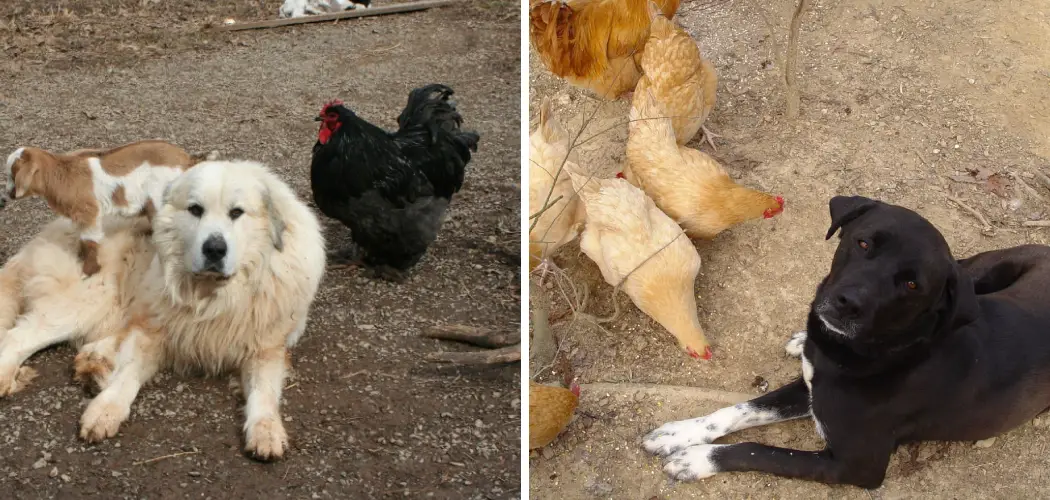Great Pyrenees dogs, known for their calm demeanor and fierce loyalty, make exceptional guardians for livestock, including chickens. These gentle giants possess a natural protective instinct that, when properly honed, can provide an impenetrable shield around your feathered flock.
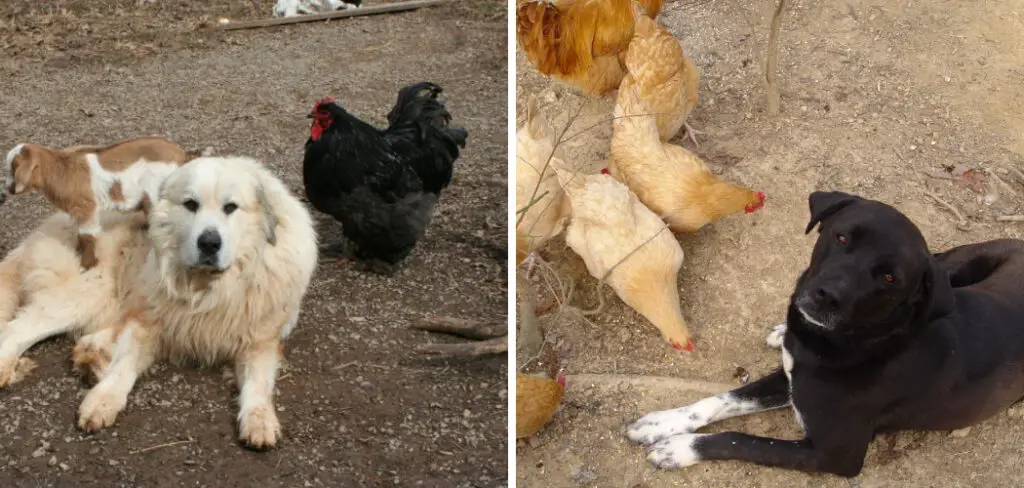
Training a Great Pyrenees to guard chickens involves a series of steps tailored to enhance their innate guarding abilities, reinforce obedience, and foster a bond between the dog and the poultry it is meant to protect.
This guide on how to train great pyrenees to guard chickens aims to equip you with the essential knowledge and techniques necessary to train your Great Pyrenees to become an effective and dependable chicken guardian, ensuring the safety of your chickens from predators and threats.
What is a Great Pyrenees Dog?
A Great Pyrenees dog, also known as the Pyrenean Mountain Dog, is an ancient breed originating from the mountains of France and Spain. These majestic dogs were traditionally bred for guarding livestock, particularly sheep, in harsh mountain terrain. Their large size, thick white coat, and calm yet protective nature make them well-suited for this role.
Today, Great Pyrenees dogs are still used for guarding livestock, but they have also become popular as family pets due to their gentle and affectionate nature. However, it is important to remember that their natural instincts for guarding can still be honed and utilized effectively when trained properly.
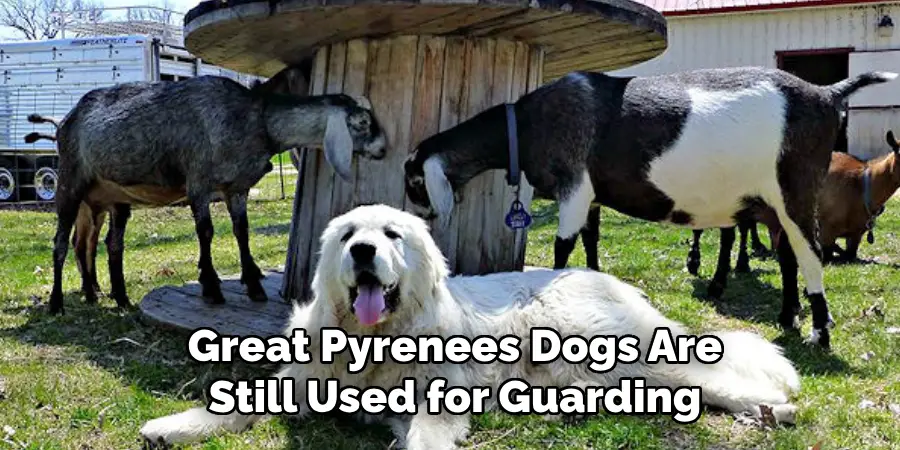
You can expect your Great Pyrenees to weigh between 85-115 pounds and stand at a height of 25-32 inches at the shoulder. They have a sturdy, muscular build and a thick double coat that provides insulation in both hot and cold weather.
Understanding the Natural Instincts of Great Pyrenees Dogs
The great Pyrenees were bred for centuries to be independent thinkers and decision-makers, which is an essential characteristic of a livestock guardian dog. They are naturally protective and have a strong desire to defend their flock or family from any potential threats.
Their guarding instincts kick in when they sense danger or unfamiliar animals in their territory. They will bark loudly, stand tall, and use their size and strength to intimidate and ward off potential predators. In some cases, they may even physically intervene to protect their flock.
But it’s important to note that Great Pyrenees dogs can also be stubborn and strong-willed, which can make training a bit more challenging. However, with consistency and positive reinforcement techniques, you can channel their natural instincts into effective guarding behaviors.
Needed Materials
A Well-fitted Collar and Leash:
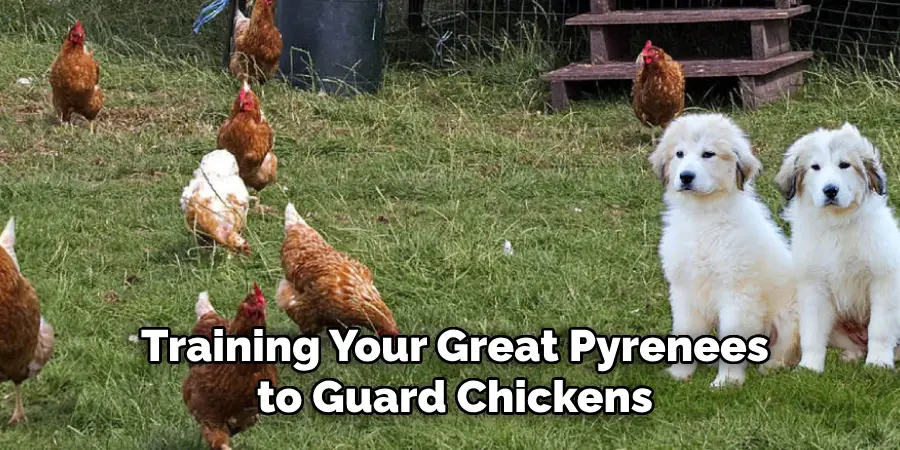
When training your Great Pyrenees to guard chickens, it’s essential to have a well-fitted collar and leash for control and safety purposes. Make sure the collar is not too tight or too loose, and the leash is of appropriate length.
Treats:
Positive reinforcement techniques involve rewarding your dog with treats when they exhibit desired behaviors. Make sure to have plenty of small, soft treats on hand during training sessions.
Whistle or Clicker:
Using a whistle or clicker can help you communicate with your Great Pyrenees more effectively during training. You can use the sound to mark desired behaviors and reinforce them with treats.
Flock of Chickens:
Of course, you will also need a flock of chickens to train your Great Pyrenees with. It’s best to start training when the chickens are young and gradually familiarize them with the dog.
10 Step-by-step Guidelines on How to Train Great Pyrenees to Guard Chickens
Step 1: Start with Basic Obedience Training
Before diving into specific training for guarding chickens, it’s crucial to establish a foundation of basic obedience in your Great Pyrenees. This involves teaching the dog basic commands such as “sit,” “stay,” “come,” and “leave it.” These commands will come in handy during the training process.
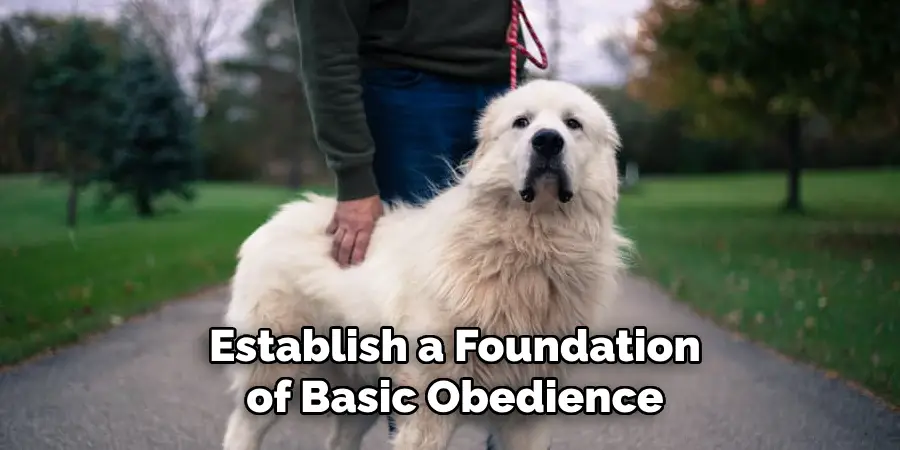
You can use positive reinforcement techniques to train your dog in basic obedience. It’s important to be consistent and patient during this stage. The more your Great Pyrenees understand and follow basic commands, the easier it will be to train them to guard chickens.
Step 2: Introduce Your Great Pyrenees to the Chickens
Once your dog has a good grasp of basic obedience, it’s time to introduce them to the chickens. Start with supervised, controlled interactions while on a leash. This will help familiarize both parties and build trust between them.
Reward your dog with treats for positive behaviors, and continue to reinforce basic commands during these interactions. The goal is for your dog to see the chickens as part of their flock. It’s important to note that this step may take time, so be patient and consistent. The key is to make the interactions as positive and stress-free as possible for both your dog and the chickens.
Step 3: Teach the “Leave It” Command
The “leave it” command is essential in training your Great Pyrenees to guard chickens. This command instructs the dog to ignore or move away from something that may be harmful or distracting.
Start by teaching this command with treats and gradually introduce distractions, such as toys or food, to practice the command in more challenging situations. The ultimate goal is for the dog to use the “leave it” command when encountering potential predators or threats to the chickens.
Step 4: Teach the “Stay” Command
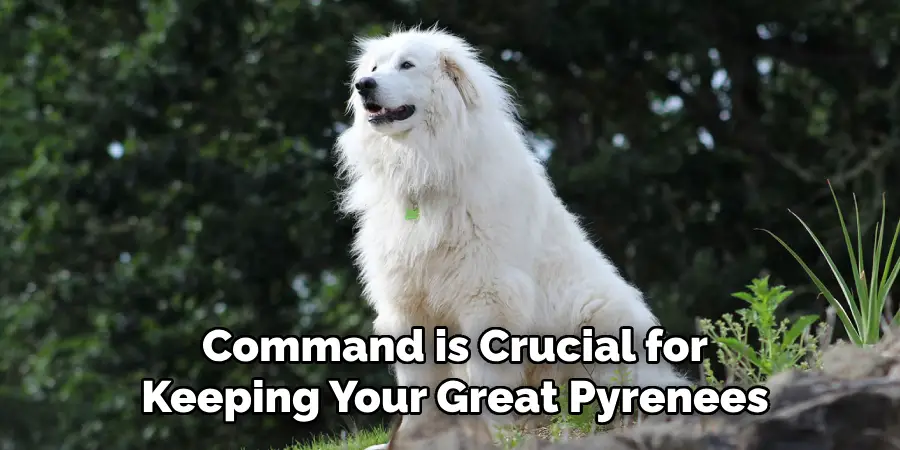
The “stay” command is crucial for keeping your Great Pyrenees in a designated area while you tend to other tasks. Start by practicing this command indoors and gradually move on to outdoor settings with more distractions.
Reward your dog for staying in place and reinforce the command with treats and positive reinforcement techniques. But remember, it’s essential to always supervise your dog while they are around the chickens. It’s not safe to leave them alone, even if they are trained to stay.
Step 5: Establish Boundaries
Set clear boundaries for your Great Pyrenees when it comes to their designated “guarding area,” as well as areas that are off-limits, such as the chicken coop. Use physical barriers, like fences or gates, to reinforce these boundaries.
Your dog should learn to respect and protect the designated area while also understanding that they are not allowed in certain places. You can use the “leave it” command to reinforce these boundaries. The ultimate goal is for your dog to guard the chickens from a safe distance.
Step 6: Introduce Distractions
Incorporate distractions into training sessions to simulate real-life scenarios. This could include loud noises, unfamiliar animals, or even people approaching the chickens. Use the “leave it” command and reinforce desired behaviors with treats.
Gradually increase the level of distractions as your dog becomes more comfortable and confident in their role as a guardian. You can also simulate potential predator encounters to prepare your dog for real-life situations.
Step 7: Practice Recall
The recall is an essential command for any dog, but it’s especially crucial when training Great Pyrenees to guard chickens. Start by practicing recall in low-distraction environments, using treats and positive reinforcement techniques.
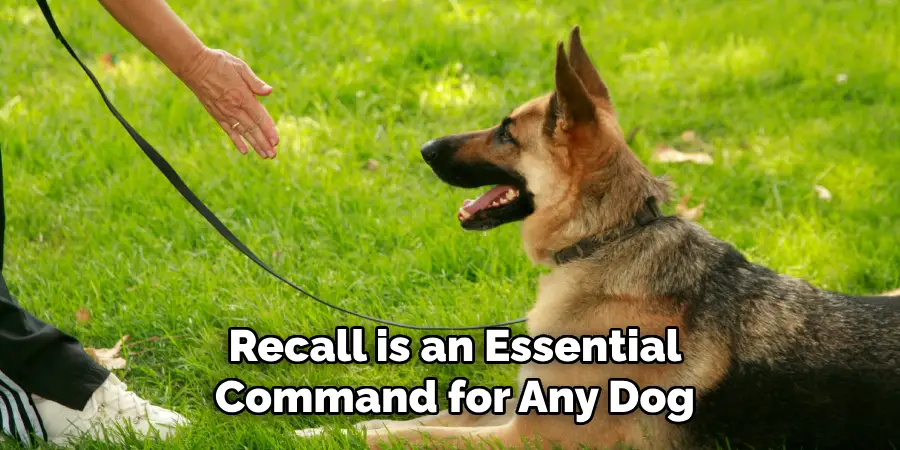
Then, gradually increase the level of distractions and practice recall in different scenarios. The goal is for your dog to come back to you when called, even when they are focused on guarding the chickens. It’s important to have a strong recall in case of emergencies or if your dog becomes too aggressive towards predators.
Step 8: Train Your Dog to Bark on Command
Barking is a natural response for the Great Pyrenees when they sense danger or unfamiliar animals in their territory. However, it’s essential to teach your dog to bark on command and stay quiet when needed.
You can use a whistle or clicker to mark desired barking behaviors and reinforce them with treats. Practice this command in different scenarios, gradually increasing the level of distractions. The goal is for your dog to bark as a warning, but not excessively or aggressively. You should also be able to stop the barking on command.
Step 9: Monitor and Reinforce Behaviors
Always supervise your Great Pyrenees when they are around the chickens. If you notice any unwanted behaviors, use positive reinforcement techniques to redirect their focus and reinforce desired behaviors. Consistency and patience are key during this stage of training. It’s also important to continue reinforcing basic obedience commands and practicing recall regularly. The more you practice, the better your dog will become at guarding chickens.
Step 10: Gradually Increase the Time Unsupervised
Once your dog has consistently demonstrated desired behaviors, you can gradually increase the amount of time they spend unsupervised with the chickens. Start with short periods, such as a few minutes, and gradually increase to longer durations.
Always monitor your dog’s behavior and make adjustments as needed. Remember, it’s essential to never leave your Great Pyrenees alone with the chickens for extended periods.
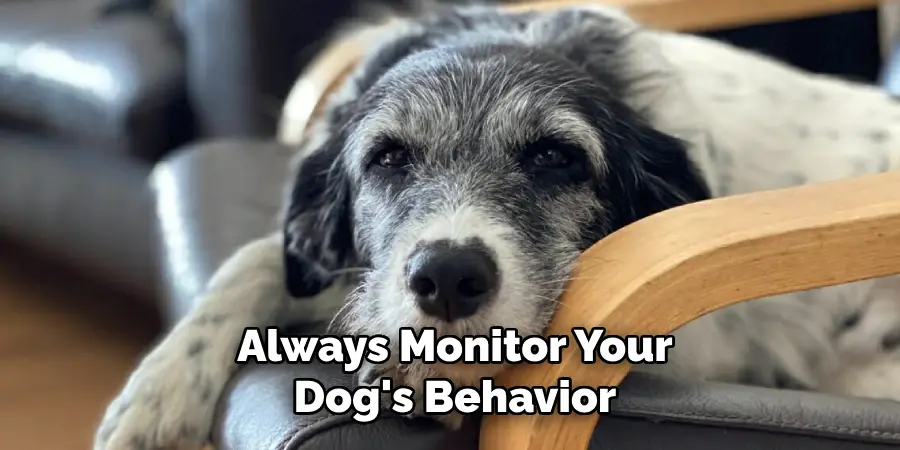
Following these steps on how to train great pyrenees to guard chickens and being consistent with training will help your Great Pyrenees become a reliable guardian for your chickens. It’s important to continue reinforcing desired behaviors and practicing regularly, even after your dog has become comfortable in their role. With time and patience, you’ll have a well-trained and trustworthy protector for your feathered friends.
Do You Need to Use Professionals?
In some cases, it may be necessary to seek professional help when training your Great Pyrenees to guard chickens. This is especially true if your dog has a strong prey drive or aggressive tendencies towards other animals. A professional trainer can assess your dog’s behavior and provide personalized training techniques and guidance.
Additionally, working with an experienced trainer who has experience with livestock guardian breeds can be beneficial in developing a successful training plan for your Great Pyrenees. They can also help you navigate any challenges that may arise during the training process.
Remember, properly training a Great Pyrenees to guard chickens takes time, patience, and consistency. With the right techniques and approach, you can have a well-trained and reliable guardian for your feathered friends. Always prioritize your dog’s safety and well-being, and never leave them alone with the chickens for extended periods. With dedication and training, you’ll have a happy and harmonious relationship between your Great Pyrenees and chickens. So, it is always better to take the help of professionals if needed.
How Much Time and Effort Does it Require?
Training a Great Pyrenees to guard chickens requires time, dedication, and patience. Each dog is unique and may require different training methods and timelines. It’s important to understand that this is a process and results may not be immediate.
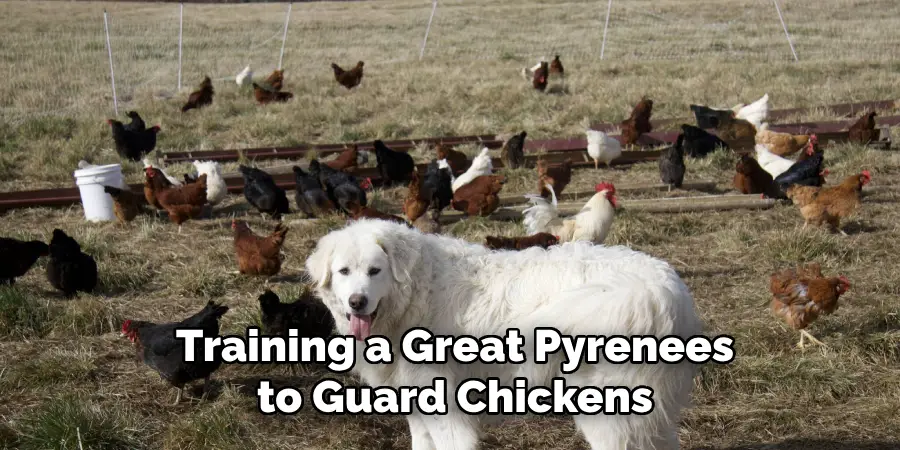
The amount of time and effort required also depends on your dog’s age, temperament, and previous training experience. It’s best to start training when your Great Pyrenees is still a puppy, as they are more receptive to learning at a young age. However, adult dogs can also be trained with consistency and patience.
It’s important to remember that training is an ongoing process, and you should continue reinforcing behaviors even after your dog has become comfortable in their role as a guardian. Regular training sessions and consistent reinforcement of basic obedience commands are essential for maintaining desired behaviors.
Additional Tips
- Introduce your Great Pyrenees to the chickens at a young age to help establish a bond and reduce potential aggression.
- Use positive reinforcement techniques, such as treats and praise, instead of punishment when training your dog.
- Consider enrolling in obedience classes or seeking professional training assistance if needed.
- Make sure your dog has plenty of exercise and mental stimulation to prevent boredom and unwanted behaviors.
- Always provide a safe and comfortable environment for your Great Pyrenees, including proper shelter, food, and water.
- Regularly check for any health issues or injuries that may affect their ability to guard the chickens effectively.
- Remember that each dog is unique and may require different training approaches. Be patient and adapt to your dog’s individual needs.
- Seek advice from experienced Great Pyrenees owners or breeders for additional tips and tricks on how to train your dog to guard chickens effectively.
- Most importantly, never leave your Great Pyrenees unattended around the chickens or other potential predators. Safety should always be a top priority for both your dog and your chickens. So, stay vigilant and continue practicing positive reinforcement techniques to ensure a successful training process. Happy training!
Frequently Asked Questions
Q: Can Any Breed of Dog Be Trained to Guard Chickens?
A: While any breed can potentially be trained, Great Pyrenees are known for their natural instincts and abilities as livestock guardians. They have a strong protective instinct and are considered one of the best breeds for guarding chickens. You can also consider other livestock guardian breeds such as Anatolian Shepherds, Maremmas, or Akbash dogs.
Q: How Long Does It Take to Train a Great Pyrenees to Guard Chickens?
A: Training your Great Pyrenees to guard chickens can take anywhere from a few weeks to several months. It depends on the individual dog’s learning pace and the consistency of training. Some dogs may pick up commands and behaviors quickly, while others may take more time to learn and reinforce them.
Q: Is It Safe for My Great Pyrenees to Be Around Chickens?
A: Great Pyrenees are generally considered safe around chickens, as their natural instincts make them excellent guardians. However, it’s essential to always supervise your dog and use caution when introducing them to the chickens. It’s also important to continue reinforcing training and boundaries, as accidents can still happen.
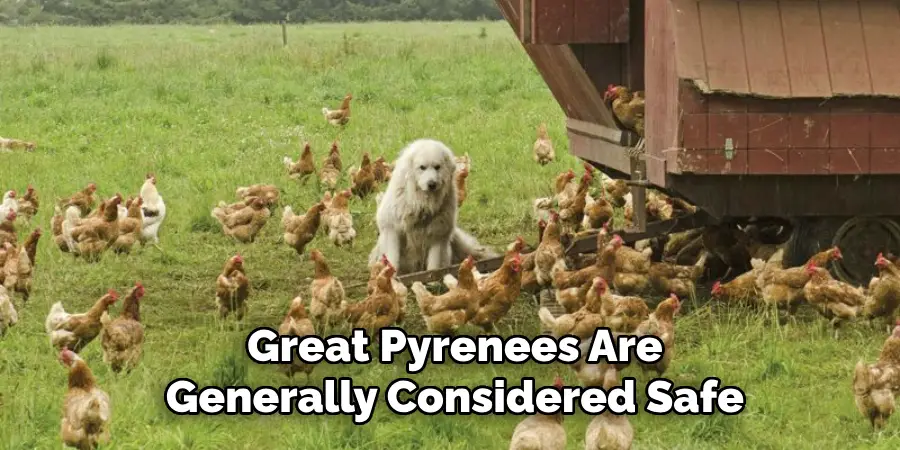
Q: Can I Train My Great Pyrenees to Guard Other Types of Livestock?
A: Yes, you can train your Great Pyrenees to guard other types of livestock such as goats, sheep, or even cattle. However, it’s important to keep in mind that each type of animal may require different training techniques and considerations. It’s best to consult with a professional trainer or do research specific to the type of livestock you want your dog to guard.
Q: Can I Train My Great Pyrenees to Do Other Tasks?
A: Yes, Great Pyrenees are versatile and trainable dogs. In addition to guarding livestock, they can also be trained for tasks such as search and rescue, therapy work, or obedience competitions. They excel in roles that utilize their intelligence, loyalty, and calm nature. It’s important to start training early and be consistent to help your Great Pyrenees develop their skills.
Conclusion
The great Pyrenees are natural guardians with a strong protective instinct that can make them excellent protectors for chickens. However, it’s essential to train and socialize them properly to ensure they exhibit desired behaviors and do not become aggressive towards other animals or people.
By following these steps on how to train great pyrenees to guard chickens and being consistent with training, you can successfully train your Great Pyrenees to be a reliable guardian for your chickens.
Remember to always supervise your dog when around the chickens, continue reinforcing behaviors, and consult with a professional trainer if needed. With patience and consistency, you’ll have a well-trained and trustworthy protector for your feathered friends.
About
Outdoor Fixes is a distinguished figure in the world of Diy design, with a decade of expertise creating innovative and sustainable Diy solutions.
His professional focus lies in merging traditional craftsmanship with modern manufacturing techniques,
fostering designs that are both practical and environmentally conscious. As the author of diy,
outdoorfixes delves into the art and science of outdoorfixes-making, inspiring artisans and industry professionals alike.
Education RMIT University
(Melbourne, Australia) Associate Degree in Design (Outdoor Fixes) Focus on sustainable design, industry-driven projects,
and practical craftsmanship. Gained hands-on experience with traditional and digital manufacturing tools, such as CAD and CNC software.
Nottingham Trent University
(United Kingdom) Bachelor’s in outdoorfixes.com and Product Design (Honors) Specialized in product design with a focus on blending creativity with production
techniques. Participated in industry projects, working with companies like John Lewis and Vitsoe to gain real-world insights.
Publications and Impact
In diy, Outdoor Fixes his insights on indoor design processes, materials, and strategies for efficient production.
His writing bridges the gap between artisan knowledge and modern industry needs, making it a must-read for both budding designers and seasoned professionals.

